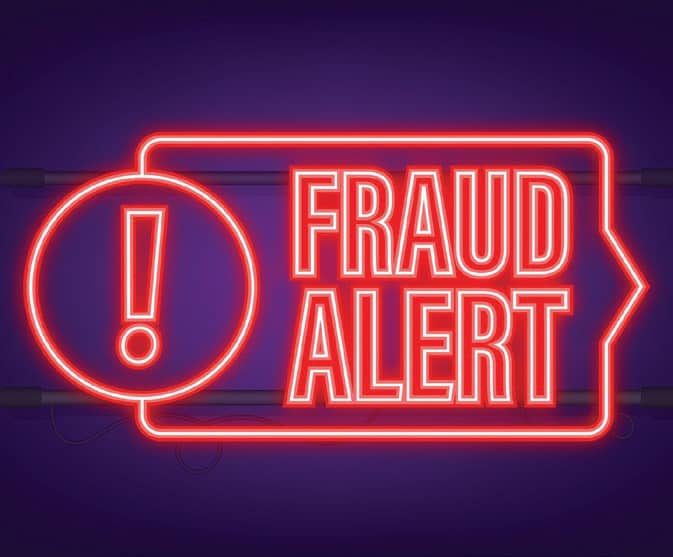6 key tax Q&As for 2023
Right now, you may be more concerned about your 2022 tax bill than you are about how to handle your personal finances in the new year. However, as you deal with your annual tax filing, it’s a good idea to also familiarize yourself with pertinent amounts that may have changed for 2023.
Not all tax figures are adjusted for inflation. And even if they are, during times of low inflation the changes may be slight. When inflation is higher, as it currently is, the changes are generally more substantial. In addition, some tax amounts can change only with new tax legislation. Here are six commonly asked (and answered) Q&As about 2023 tax-related figures:
- How much can I contribute to an IRA for 2023? If you’re eligible, you can contribute up to $6,500 a year to a traditional or Roth IRA (up from $6,000 in 2022). If you’re age 50 or older, you can make another $1,000 “catch-up” contribution.
- I have a 401(k) plan through my job. How much can I contribute to it? For 2023, you can contribute up to $22,500 to a 401(k) or 403(b) plan. You can make an additional $7,500 catch-up contribution if you’re age 50 or older. (These figures for 2022 were $20,500 and $6,500, respectively).
- I sometimes hire a babysitter and a cleaning person. Do I have to withhold and pay FICA tax on the amounts I pay them? In 2023, the threshold for when a domestic employer must withhold and pay FICA for babysitters, house cleaners and other domestic employees has increased to $2,600 for 2023 (up from $2,400).
- How much do I have to earn in 2023 before I can stop paying Social Security on my salary? The Social Security tax wage base is $160,200 for 2023, up from $147,000 for 2022. That means that you don’t owe Social Security tax on amounts earned above that. (You must pay Medicare tax on all amounts that you earn.)
- I didn’t qualify to itemize deductions on my last tax return. Will I qualify for 2023? The Tax Cuts and Jobs Act eliminated the tax benefit of itemizing deductions for many people by increasing the standard deduction and reducing or eliminating various deductions. For 2023, the standard deduction amount is $27,700 for married couples filing jointly (up from $25,900 for 2022). For single filers, the amount is $13,850 (up from $12,950) and, for heads of households, it’s $20,800 (up from $19,400).
So, if the total amount of your itemized deductions (such as charitable gifts and mortgage interest) is less than the applicable standard deduction amount, you won’t itemize for 2023.
- How much can I give to one person without triggering a gift tax return in 2023? The annual gift exclusion for 2023 is $17,000 (up from $16,000 in 2022). This amount is only adjusted in $1,000 increments, so it typically increases only every few years.
These are only some of the tax figures that may apply to you. For more information about your tax picture, or if you have questions, don’t hesitate to contact us.
Are you at risk for investment fraud?
Many perpetrators of investment fraud know how to push the right psychological buttons to entice their “marks” to buy worthless or nonexistent securities. You can mitigate the risks by asking a few questions, performing some research and consulting with trusted advisors.
Beware
Be alert for these common scams:
Pyramid and Ponzi. The con artist promises high returns, often in a short period, yet there’s no actual investment product. Instead, the scheme relies on continually recruiting new participants whose money is used to pay “returns” to earlier participants. As the scheme grows, it becomes increasingly difficult to attract enough new investors and pay old ones. Eventually it collapses and most participants lose everything.
Pump and dump. Fraudsters use false or misleading statements to recruit investors and boost the price of an obscure and usually low-priced stock. When the stock rises to a certain level, the crooks dump their shares and disappear. The stock price plummets, leaving investors with nearly worthless holdings.
Advance fee. Individuals holding a failed investment are targeted. A fraudster may offer, for example, to take a losing stock off your hands for an attractive price provided you pay an up-front fee. Once you pay the fee, the thief vanishes.
Know the signs
Be suspicious of investments that offer guaranteed returns or remarkably consistent returns even during turbulent times. Avoid unregistered securities sold by unlicensed individuals or investments that lack documentation (for example, a prospectus).
You can verify a professional’s credentials with the U.S. Securities and Exchange Commission (SEC), the Financial Industry Regulatory Authority (FINRA) and state securities agencies. If you’re tempted to invest with an unknown “broker” or buy an unfamiliar stock, FINRA’s website (finra.org) offers a variety of points to double-check before engaging in the transaction.
Most investments must be registered before they can be sold to the public, so plug the security’s name into the SEC’s EDGAR database (sec.gov/edgar.shtml). Keep in mind that registration alone doesn’t guarantee that an investment is legitimate or appropriate.
Defend!
Ultimately, the best defense against investment fraud is to work with financial advisors you know and trust. If you receive a “hot tip,” always run it by at least one trusted advisor before plunking down any money.
Are you at risk of retirement plan leakage?
Generally, the term “leakage” has negative connotations. So, it’s not surprising that the same is true in the context of retirement planning, where leakage refers to pre-retirement early withdrawals from a retirement account. Now, as a business owner who sponsors a qualified retirement plan, you might say, “Well, that’s my participants’ business. Not mine.”
However, there are valid reasons to address the issue with employees who participate in your plan.
Does it matter?
For starters, leakage can lead to higher plan expenses. Fees are often determined on a per-account or per-participant basis. When a plan loses funds to leakage, total assets and individual account sizes shrink, which tends to hurt administrative efficiency and raise costs.
More broadly, if your employees are taking pre-retirement withdrawals, it could indicate they’re facing unusual financial challenges. These issues may have a negative impact on productivity and work quality and leave them unable to retire when they planned to.
The stress surrounding COVID-19 may account for part of the financial need. And more recently, the “Great Resignation” could lead some workers to draw out retirement funds to live on or use to start a business of their own.
What can you do?
The most important thing business owners can do to limit leakage is to educate and remind employees about how pre-retirement withdrawals can diminish their accounts and delay their anticipated retirement dates. While you’re at it, consider providing broader financial education to help workers better manage their money, amass savings, and minimize or avoid the need for early withdrawals.
Some companies offer emergency loans that are repayable through payroll deductions to reduce the use of retirement funds. Others have revised their plan designs to limit the situations under which plan participants can take out hardship withdrawals or loans.
Can you eliminate the problem?
“Roughly 22% of net contributions made by those 50 or younger leaks out of the retirement savings system in a given year,” according to a 2021 report by the Joint Committee on Taxation. Some percentage of retirement plan leakage will probably always occur to some extent, but becoming aware of the problem and taking steps to minimize it are still worthwhile for any business. We can answer questions you might have about leakage or other aspects of plan administration and compliance.
Smooth sailing: Tips for easier navigation through tax season
The IRS generally begins accepting the previous year’s individual tax returns in late January. Here are quick tips you can use to help speed tax processing and avoid hassles.
For starters, contact us soon for your tax preparation appointment. Gather all documents needed to prepare an accurate return, including W-2s, 1099 forms, and statements of interest paid or received. Failure to provide all of this information means a return is incomplete, which may then require additional processing and delay any refund that’s due.
Be accurate. Ensure that every name on your tax return is spelled correctly, and that each Social Security number on the return matches the number on the Social Security card. If you supply a bank account number, double check it.
Possible penalties
What if you file late or can’t pay your tax bill? Separate penalties apply for failing to pay and failing to file. Both are based on a percentage of the unpaid or late taxes. You can avoid late filing by obtaining an extension of the time to file (until October 16 this year). However, you must still pay any taxes due by the regular deadline or face possible penalties.
These penalties can be quite severe, but if the lateness occurs for a “reasonable cause,” such as illness, the IRS may excuse it. Contact us with your questions.
Tax Calendar
January 17 – Individual taxpayers’ final 2022 estimated tax payment is due.
January 31 – Employers must file 2022 Forms W-2 (“Wage and Tax Statement”) with the Social Security Administration and provide copies to their employees.
- Employers must file (paper or electronic) 2022 Forms 1099-NEC (“Nonemployee Compensation”), reporting nonemployee compensation payments, along with the related Form 1096 (“Annual Summary and Transmittal of U.S. Information Returns”), and provide copies to recipients.
- Most employers must file Form 941 (“Employer’s Quarterly Federal Tax Return”) to report Medicare, Social Security and income taxes withheld in the fourth quarter of 2022. If an employer’s tax liability is less than $2,500, he or she can pay it in full with a timely filed return. If an employer deposited the tax for the quarter in full and on time, he or she has until February 10 to file the return. Employers who have an estimated annual employment tax liability of $1,000 or less may be eligible to file Form 944 (“Employer’s Annual Federal Tax Return”).
- Employers must file Form 940 (“Employer’s Annual Federal Unemployment (FUTA) Tax Return”) for 2022. If an employer’s undeposited tax is $500 or less, he or she can either pay it with the return or deposit it. If it is more than $500, he or she must deposit it. However, if an employer deposited the tax for the year in full and on time, he or she has until February 10 to file the return.
- Employers must file Form 943 (“Employer’s Annual Federal Tax Return for Agricultural Employees”) to report Social Security, Medicare and withheld income taxes for 2022. If an employer’s tax liability is less than $2,500, he or she can pay it in full with a timely filed return. If an employer deposited the tax for the year in full and on time, he or she has until February 10 to file the return.
- Employers must file Form 945 (“Annual Return of Withheld Federal Income Tax”) for 2022 to report income tax withheld on all nonpayroll items, including backup withholding and withholding on pensions, annuities, IRAs, etc. If an employer’s tax liability is less than $2,500, he or she can pay it in full with a timely filed return. If an employer deposited the tax for the year in full and on time, he or she has until February 10 to file the return.
February 28 – Employers must file 2022 Form 1099-MISC (“Miscellaneous Income”) reporting certain payments to certain persons, along with the related Form 1096 (“Annual Summary and Transmittal of U.S. Information Returns”), and provide copies to recipients.
March 15 – Calendar-year partnerships and S corporations must file or extend 2022 tax returns. If the return is not extended, this is also the last day for those types of entities to make 2022 contributions to pension and profit-sharing plans.
About Batley CPA
Batley CPA, LLC is a full-service CPA firm providing tax, accounting, payroll and advisory services to businesses and individuals throughout Green Bay and the Fox Cities. Batley CPA regularly provides clients with best practices and strategies to maximize cash flow, profit, reduce taxes, manage costs and risk, and bring meaning to financial and operational data. The company has offices in Appleton, Neenah and Green Bay.






